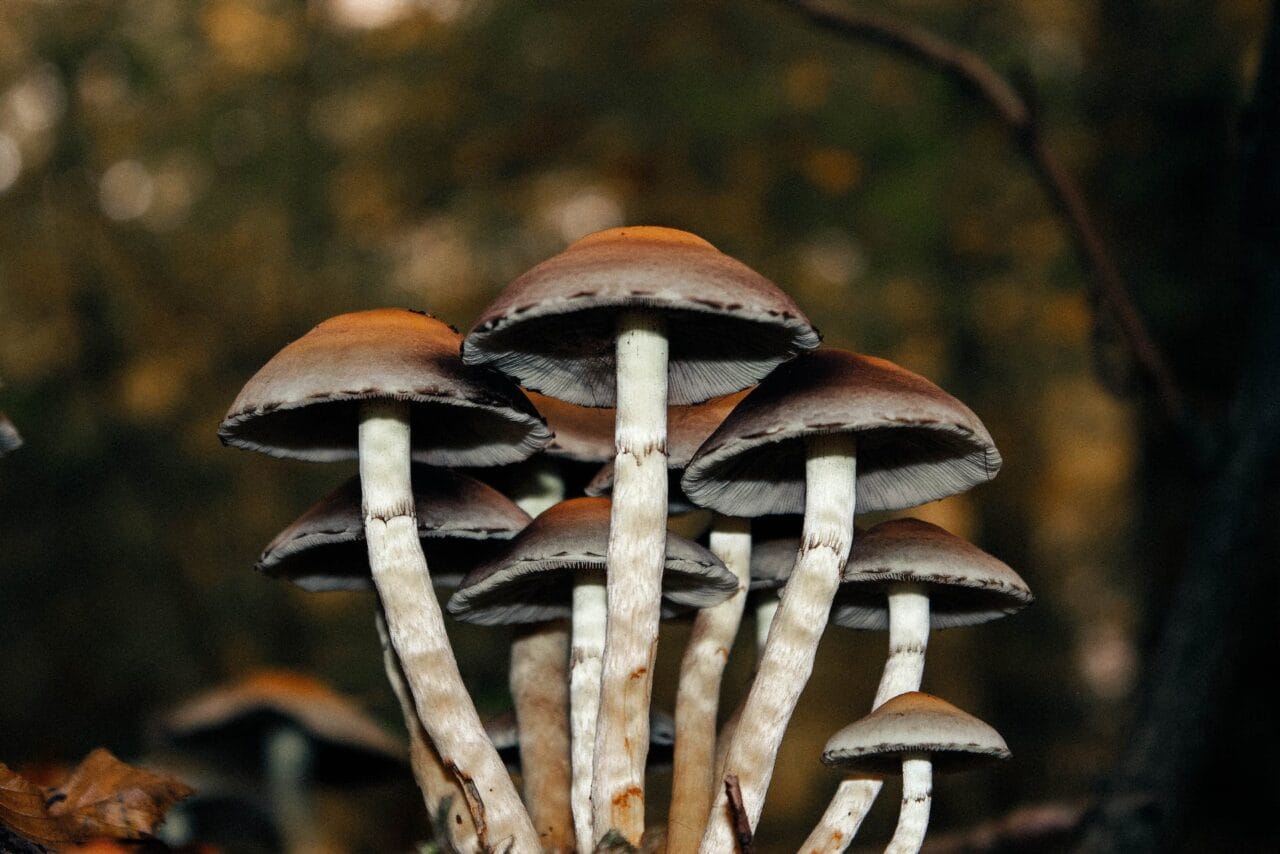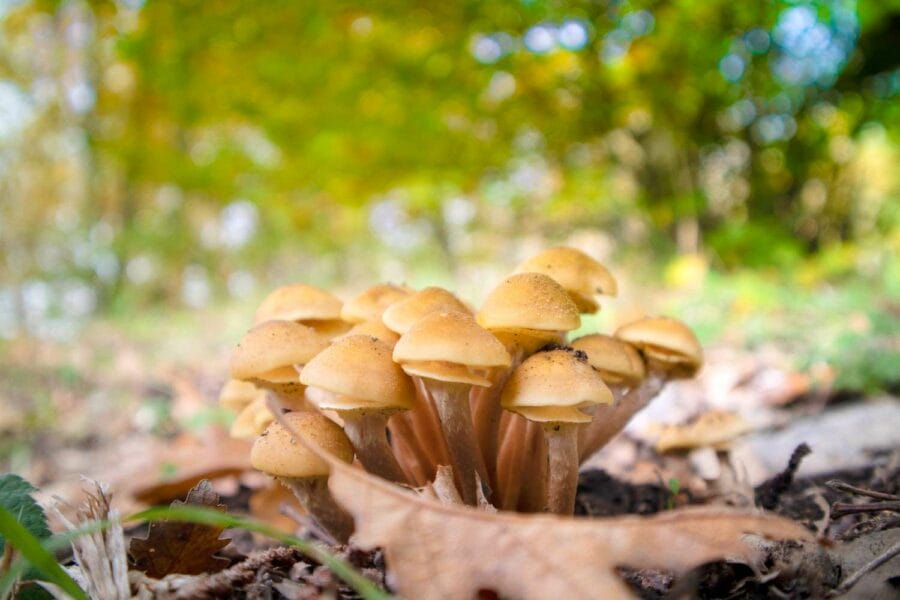Psilocybin, a psychoactive compound inherent in magic mushrooms, is frequently utilized for recreational purposes due to its ability to induce euphoria and hallucinations.
Aside from its mind-altering properties, researchers have been exploring the compound’s potential to provide relief for chronic pain sufferers.
This article shares a case study investigating the potential of microdosing mushrooms for chronic pain alleviation.
Key Takeaways:
- Microdosing mushrooms may provide both immediate and sustained relief from pain.
- Psilocybin microdosing, compared to traditional pain medication, generally has fewer side effects when administered in small doses.
- Psilocybin interacts with serotonin 2A (5-HT2A) receptors, which can help alleviate pain, among other symptoms.

The Study
Dr. Matthew Lyes and his team from the Division of Pain Medicine, Department of Anesthesiology, at the University of California, San Diego, conducted a study titled “Microdosing Psilocybin for Chronic Pain: A Case Series“. They centered their research on three patients who self-medicated with small doses of psilocybin to control their chronic pain.
Three Patients, One Result – Chronic Pain Reduction
Patient # 1
| AGE/ GENDER: | 37 Male |
| PAIN TYPE: | Neuropathic pain experienced below the site of a spinal cord injury. |
| LEVEL OF PAIN: | Started at 4 to 5/ 10, increasing to 8/ 10 later in the day |
| PSILOCYBIN DOSE: | 250 mg of ground mushroom for less than 6 months |
| OUTCOME: | Discontinuation of prescribed pain medication, decrease in muscle spasms, and improved bowel movement efficiency. No signs of rebound pain or withdrawal symptoms. |
| The patient noted that psilocybin significantly reduced his pain, unlike his regular medication, which only managed to lessen it. This resulted in his average pain level dropping from 5 to 0. | |
Case Study: Subject #2
| AGE/GENDER: | 69-year-old female |
| PAIN TYPE: | Complex Regional Pain Syndrome (CRPS) |
| PAIN INTENSITY: | Typically between 5 and 7 out of 10, increasing with activity and during flare-ups |
| PSILOCYBIN DOSAGE: | 500 mg daily for 7 to 10 days, with breaks of 2 to 3 days over a year. Dosage increases to 750 mg to 1 gram during flare-ups |
| EFFECT: | 80% decrease in pain, lasting 3-4 hours, slowly returning to baseline after 12 hours. Complete pain relief (90%-100%) lasts 6-8 hours, returning to baseline after 18 hours. |
| The subject reports a reduced appetite without experiencing nausea. Increased disorientation or instability when walking is observed when the dosage is augmented (750 to 1000mg). | |
Case Study: Subject # 3
| AGE/GENDER: | 40-year-old female |
| PAIN TYPE: | Lumbar radiculopathy and neuropathic pain |
| PAIN INTENSITY: | 8 out of 10, rising to 10 during physical activities |
| PSILOCYBIN DOSAGE: | 1000 mg from a mushroom chocolate bar every two months. |
| EFFECT: | Significant pain relief without any psychoactive impact. An increase in flexibility and overall function is noted. Pain slowly returns to initial levels over 2-4 weeks. Repeated dosing enhances pain management. |
| The subject reports no significant physical, cognitive, or behavioural side effects. Her mood remains predominantly stable. She maintains her regular dosage of her SSRI for depression management throughout the psilocybin treatment. | |
Deciphering Pain Management with Psilocybin
Continual somatic and visceral pain signals can solidify specific neural pathways due to peripheral and central sensitization, leading to a persistent experience of pain both physically and psychologically. Psychedelics like psilocybin can activate 5-HT2A receptors, potentially resetting the brain regions linked with neuropathic conditions.
A patient reported experiencing pain relief lasting for several weeks. This suggests that direct stimulation of 5-HT2A receptors can result in central regulation of pain perception and synaptic adaptability.
Potential Adverse Effects of Psilocybin Compared to Traditional Painkillers
| PSILOCYBIN (Based on Research) | TRADITIONAL PAINKILLERS |
| Muscle spasms | Nausea |
| Decreased appetite | Stomach discomfort |
| Confusion | Headaches |
| Impaired balance | Dependency risk |
| No mood changes | Drowsiness |
Future Research Possibilities Involving Psilocybin
Based on the experiences of three participants, the research team has highlighted several areas for future research due to their potential benefits.
- Small psilocybin doses could provide immediate and possibly sustained relief from neuropathic pain without leading to dependency or tolerance.
- Examine the impact of combining psilocybin with other treatment approaches. For example, patient # 3 reported enhanced pain relief when psilocybin was combined with physical therapy.
- Even in the absence of psychotherapy, small psilocybin doses could offer pain relief as demonstrated in this case study. The researchers propose that the incorporation of therapeutic support could potentially enhance or prolong the beneficial effects.
Study Limitations
While the results are encouraging, it’s crucial to acknowledge the study’s identified limitations.
- The small sample size might not accurately reflect the experiences of all individuals dealing with neuropathic pain.
- The study didn’t include any participants who didn’t respond to psilocybin.
- No pre and post-treatment evaluations were conducted to investigate psilocybin’s impact on psychiatric conditions like depression and anxiety.
- Most of the data was based on self-reports from the participants.
- The interviewer’s presence and potential bias linked to psilocybin could have influenced participant responses.
- The study didn’t consider the possible influence of the placebo effect.
- The study didn’t determine the exact amount of psilocybin present in each mushroom.
Microdosing Psilocybin Mushrooms
In the referenced study, Participant #1 and #2 consumed a small dose of psilocybin, sourced from powdered, dried mushrooms, while Participant #3 chose to blend it with chocolate. A variety of products tailored for psilocybin microdosing are available, with a selection listed below.
Dehydrated Mushrooms
While the study did not mention the specific strain utilized, the following strain is recommended for those just starting out.
- Golden Teacher: This is one of the most prevalent and easily recognizable magic mushroom strains.
- Amazonian Cubensis: This strain is known for its user-friendly nature and potential cognitive enhancements.
- Cambodian: Microdosing with Cambodian cubensis mushrooms can potentially improve focus, social awareness, and mood.
Microdose Capsules
- Euphoria Psychedelics – Micro Calm Capsules: This concoction includes Ashwagandha, Reishi, CBD, Valerian root, and Psilocybin Mushrooms, all ingredients backed by scientific evidence to alleviate anxiety and stress.
- Ground Sounds – Microdose Capsules – Champion Lover: This captivating blend offers three dosage levels: 50mg, 100mg, or 250mg of pure psilocybin paired with reishi, cacao, cordyceps, and maca.
- Kind Stranger – Brighten Capsules 250mg: These capsules feature the Golden Teacher strain, renowned for enhancing clarity, boosting creativity, and improving focus.
Psilocybin as a Pain Reliever
Although research on the analgesic effects of mushrooms is still nascent, anecdotal accounts and initial case studies are showing promise.
These instances underscore the need for comprehensive research into the potential therapeutic applications of psilocybin, class=”wp-block-list”>
What are the potential negative effects?
The potential negative effects of psilocybin include nausea, increased heart rate, and changes in sensory perception. You may also experience emotional changes such as anxiety or paranoia.
Is it legal to use psilocybin mushrooms?
The legality of using psilocybin mushrooms varies by country and region. In some areas, they are classified as a Schedule I drug, meaning they are illegal to manufacture, buy, possess, or distribute.
What are the potential benefits?
Potential benefits of psilocybin mushrooms include improved mood, increased creativity and focus, and potential relief from mental health disorders like depression.
Psilocybin mushrooms have shown promise in clinical studies, particularly in the field of chronic pain management.
Before psilocybin gained widespread acceptance as a pain reliever, the positive results from case studies offered hope to those living with chronic pain.
Frequently Asked Questions
What are the effects of microdosing psilocybin?
Psilocybin primarily activates a serotonin receptor named “5-HT2A” in the prefrontal cortex, leading to two primary outcomes:
- Increased production of “Brain-Derived Neurotrophic Factor” (BDNF)
- Enhanced “Glutamate” transmission
Additionally, psychedelics promote connections between brain regions that don’t usually interact. This unusual connectivity is a result of psychedelics’ ability to diminish the activity of the “Default Mode Network” (DMN), which is associated with various cognitive functions such as daydreaming, self-reflection, and thinking about the past and future.
What is the most recognized benefit of microdosing mushrooms?
Microdosing can potentially enhance mood, productivity, creativity, and focus. The most extensively researched benefit is its effect on mental health.
In November 2022, COMPASS Pathways, a mental health company, disclosed the findings of their comprehensive phase 2b trial, a randomized and double-blind study. Their study indicated that a single dose of psilocybin significantly reduced depressive symptoms compared to a placebo. Participants who received a higher 25 milligram dose exhibited a lasting antidepressant response at the twelve-week follow-up.
A study published in the Psychiatry Research Journal suggested that psilocybin is more effective than conventional antidepressant treatments.
How do you determine your dosage?
Start with a 0.1-gram dose of psilocybin mushrooms on the first day. If you don’t achieve the desired effects, you can incrementally increase your dose by 0.05 grams on subsequent microdosing days until you find your ideal level.
Individuals who have previously used psychotropic drugs may need to increase the dose to 0.5 grams to obtain the desired effects.
What steps should be taken before consuming mushrooms?
What are the possible adverse effects?
Potential side effects of psilocybin include nausea, elevated heart rate, and sensory perception changes. There might also be emotional changes like anxiety or paranoia.
Is it legal to use psilocybin mushrooms?
The use of psilocybin mushrooms is subject to varying legal statuses across different countries and regions. In some places, they are classified as a Schedule I drug, making their manufacture, purchase, possession, or distribution illegal.
What potential benefits can be gained?
Potential benefits of psilocybin mushrooms include mood enhancement, creativity and focus improvement, and possible relief from mental health conditions such as depression.
class=”wp-block-list”>How often should one consume microdoses of mushrooms?
Several well-accepted protocols recommend structured microdosing schedules for psychedelics. These protocols primarily vary in the number of “off” days they include, which are the days you abstain from microdosing.
The most frequently advised protocols propose implementing 1-3 rest days between microdoses. This aligns with the body’s natural tolerance mechanisms. The three protocols under consideration here are the Fadiman Protocol, the Stamets Stack, and intuitive microdosing.




